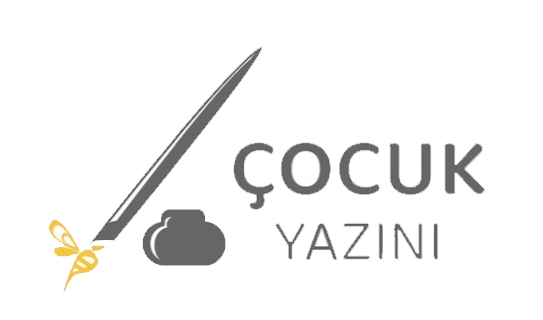Annemin Çantası (My Mum’s Bag), is a book written in poetic style by Sara Şahinkanat. The narration includes daily adventures of a mother and her two children. In this period children can always find the goods they need in their mother’s bag.
Annemin Çantası (My Mum’s Bag), is a book written in poetic style by Sara Şahinkanat. The narration includes daily adventures of a mother and her two children. In this period children can always find the goods they need in their mother’s bag. Book starts with children’s emotions expressing their astonishment. The emotion of surprise gives its place to different emotions throughout the text. At the end of the book, the child narrator realises that it is ‘their mom not the bag’ who has got the super powers. In this context, the book can be examined through three themes: Attachment, mother’s attitude and gender awareness related with mother’s attitude.
Attachment and Mother’s Attitude
Attachment implies formation of a connection between baby and the parents which is emotionally positive and mutually helping. When the relation formed conveniently, parents adapt themselves to their babies. (Gander ve Gardiner, 1993) Formation of a healthy connection between baby and mother is highly important in terms of baby’s adaptation to life. Mother’s being around the baby in the first days of them and meeting their needs enables feeling of trust to be developed for the baby. Sroufe (1978), pointed that there is a correlation between the babies who developed secure attachment and definitions such as social, attractive, curios, being tendentious to leadership and caring towards their circle at the age of 3.5. Children who develop secure attachment present a more coherent behavioural pattern with social circle at their kindergarten period. Their feeling of appreciation and satisfaction points in the activities and plays are higher than the ones who attached insecurely.
When Annemin Çantası (My Mum’s Bag) is examined in consideration of these data, different experiences children go through a day enables them to taste the point of appreciation and satisfaction healthier. This point’s ending satisfied and with a healthy happiness is such probative that how healthy the attachment between mother and child is. With the sentences “Weather is perfect/ Since it’s the middle of summer./Mum’s taking us to park./Holding her huge bag.” With the reinforcer park, mother is in the position to start the day. When the illustrations examined, children are seen cheerfully going to the park. Quotation given above is taken from the introduction part of the book. The relation of this expression with secure attachment is its preparing the process of breakaway from mother. In order for child to explore environment, breaking away from mother for some time is obligatory. In the following parts, there are children’s daily accidents and their mother’s attitudes towards them. During this attitude process, expected healthy breakaway also took place.
“Slide and swing of course/Oh no, my trousers are torn/And my younger one is in muds/We got to change the clothes/Mum’s taking spare ones out of the bag/Let’s change them, hurry up!/Hurray! This bag’s wonderful!/As if it knows what we need./If I’m bleeding,/Hitting the slide./New wounds already come before the old one goes/Mum’s opening the bag./Woah! Wound ointment…/Woah! Band-aid./Maybe this lovely bag of ours/Is an first aid expert.”
After secure attachment period, mother should create a healthy, tolerant and free space for the child in order for healthy breakaway period. In this area, the control distance between mother and child becomes more of an importance. Mother shall not be at an active closeness point and shall not also be so far that when child needs her, they cannot see. Child should know that whenever they need mother, they can see her. Both secure attachment and healthy breakaway processes occur if these points are ensured. The child wounding themselves or tearing their trousers were not seized by fear or hurry but looked for their mother in order to find a solution to the problem, in the book. And with the materials they found in the bag they were able to solve their problems and went on their day. Here, contribution of the mother is undeniable.
As it can be understood from the sentences: “Little kitty over there/Starving obviously/Our lovely bag, I wonder/If cares this incy wincy?/Woah! Milk for the kitty/Lion bag… Super bag…/Live long lovely bag!”, the character is careful about other creatures who are in need as well, besides their own needs. In this respect, we can say that mother and child have developed an attachment based upon fundamental trust. Mother is always at a point where she meets the needs of children only when they face something above their power limit. Here the areas which child can handle by themselves and where they need help are pointed. In this regard, child is aware of what they can and cannot do by themselves. Applying to mother when needed enables them to develop a perspective in terms of stronger emotional and sexual development. Dominant emotion throughout the text is child’s astonishment. This emotion transforms into happiness, satisfaction emerging due to giving a helping hand, mercy, excitement and so on, in the book. Mother’s attitude lies at the bottom of development of this emotion. Successful mothers tend to have a flexible and tolerant approach towards the child. The profile of mother with positive attitude are the people who perceive child’s needs, communicating them in a heathy way, listening to child’s desires before opposing them, replying them accurately, preparing the convenient environment for child to develop self-control, developing the sense of responsibility, teaching the limits of rights and freedoms, disciplining their children without terrifying them and enabling their children to grow as individuals who can express their thoughts freely. In this regard, the book enables child to perceive the world as a more positive place, thanks to successful mother’s attitude. Mother factor which child trusts during identity questioning helps them to perceive their own personality fields more clearly. To sum up, the book is a concrete reflection of mother’s attitude and the phenomenon of secure attachment.
Gender Awareness Regarding Mother’s Attitude
Development of gender perception starts in family and it is formed by the sociocultural structure of society. Period between ages 3 and 6 is the phase where sexual identity and exterior world realised. Attitudes of parents shapes children’s developing identity regarding both themselves and the world. Number of children in a family is an efficient factor in development of sexual identity awareness. According to the studies, perception of self-identity and identity of external world starts much more earlier in children with siblings compared to ones who do not have siblings. The book shows a structure composed of two siblings’ existence. The high point in book is children’s clothes; they do not offer a distinct gender difference. Drawings of brother’s and sister’s clothes are similar. Identities reflect to the book with little differences. When the girl changes her clothes after tearing her trousers, she wears something in different colour and structure than her brother’s clothes. In this regard, mother’s attitude in book shows a coherent structure in formation of gender identity. Parents’ attitudes towards children has a significant role in their developing genders. According to the studies, parents’ attitudes towards the boy is the attitude where they make their adult individualities speak. Attitude towards girls shows that parents switch on their child individualities. It has the influence to make them draw a certain line to concept of gender in identity formation. That is why parents’ attitude determines children’s perceiving themselves in their identity formation. In the book, mother’s communication with her children is shaped in an open perspective. Since children are in an age group where they experience process of exploration, mother does not hinder them with sharp limitations. Children who see their mothers showing an androgen identity structure would not resort to label the present order in the universe while building their own individuality areas. Mother’s making a topsail out of bag without sticking around its function, both astonishes the children and makes them admire their mother. The book sets an example with the intend of feeding their creative aspects without sticking around function in the development of gender identities.
Conclusion
Each individual who went through secure attachment and a healthy breakaway shall shape their gender identity formation in a healthier structure in the society. Gender reflections and attachment issues in the book are good examples in this respect. The book is in the position of guiding in the respect of children’s solving problems, enjoying and being witnesses of miracles’ taking place. Mother’s not intervening to child as long as they do not ask, child’s realising areas in which they can and cannot solve their problems, experiencing different mood states with one curiosity factor and mother’s offering a world with her bag to the child are pointed as outcomes of the book.
Bibliography
Çağdaş, Aysel. Anne-Baba Çocuk Eğitimi. Ankara: Eğiten Kitap, 2015.
Daniesles Susan ve Daniel Peters. Yaratıcı Çocuklar Yetiştirmek. Çev. Üzeyir Ogurlu ve Fatih Kaya. Ankara:
Eğiten Kitap, 2015.
Ed. Arslan, Emel. Erken Çocukluk Döneminde Gelişim. Ankara: Eğiten Kitap, 2015.
Şahinkanat, Sara. Annemin Çantası. İllüstratör. Ayşe İnan Alican. İstanbul: Yapı Kredi Yayınları, 2013.

